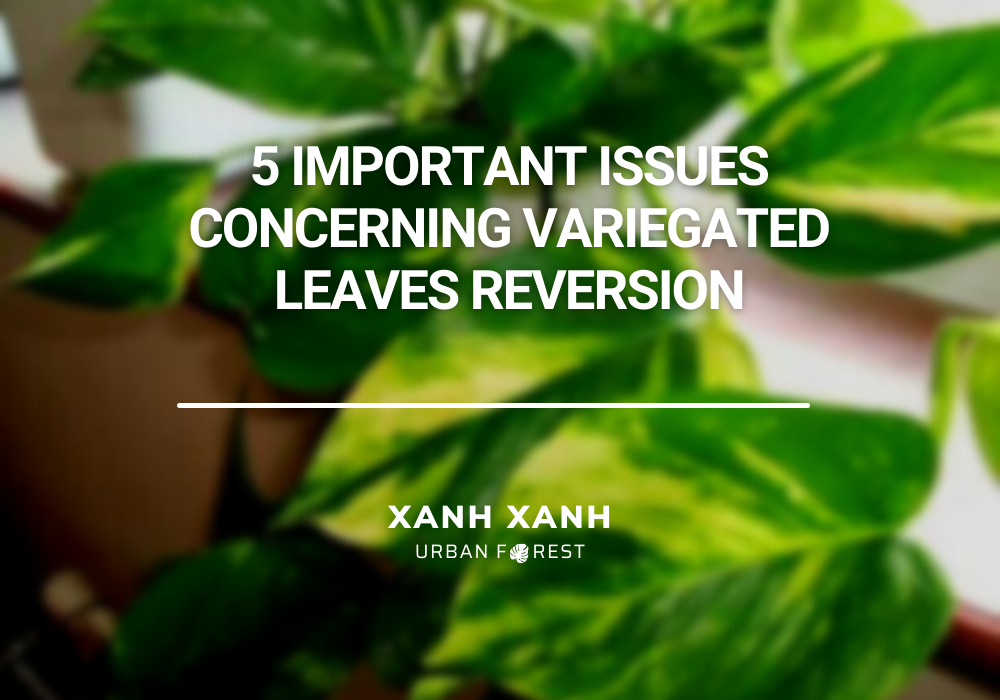Variegated leaf reversion occurs in a variety of plants. The white shading or lighter speckles and borders turn green at this point. Many gardeners are frustrated by this because variegated plants add interest, brighten dark regions, and are developed particularly to improve this quality. Plants may lose their diversity owing to illumination, seasonality, or other factors. Variegation loss cannot be reversed, although it may typically be prevented from taking over an entire plant.
What is reversion?
Variegation can occur naturally or as a result of carefully engineered breeding. In any case, variegated leaves might turn fully green due to a variety of factors. The coloring is caused by unsteady changes in the cells of the leaf. Because the green reverted leaves contain more chlorophyll than the variegated leaves, reversion is a concern. Chlorophyll is the pigment that allows the plant to harvest energy from the sun.
Because chlorophyll is a key component of photosynthesis, less chlorophyll implies less solar energy. Green plants are more vigorous than variegated plants. The tendency for variegated leaves to revert to a more successful form is a defensive adaptation that permits the plant to return to a more successful form.

Symptoms
During the growing season, reverted shoots are easily identified as pure green growths sprouting from a variegated plant’s branches. These shoots are more strong than variegated ones because they contain more chlorophyll. They can eventually take over the plant.
This is primarily a concern with variegated trees and shrubs, but it can also impact coloured Phormium hybrids, resulting in plants producing pure green leaves. Variegated plants, such as hollies, can also generate completely white or pale yellow shoots, but they are weak and do not take over like green shoots do.
Why does variegation disappear?
For the gardener, the loss of variegation is a frustrating problem. What causes variegation to vanish? It could be a survival strategy for the plant. It could also be caused by a mutation in another leaf cell. Plants with variegated leaves that thrive in shaded or semi-shady areas have a distinct disadvantage. They are not just deficient in chlorophyll, but they are also not exposed to enough light.
Variegated leaves are more likely to revert in this condition. Care Instructions For Pothos Plants Changes in heat or cold can also cause plants to lose their diversity. If the weather isn’t cooperating with a plant, it may revert to gain a competitive advantage. When the leaves are completely green, the plant can harvest more sun energy, giving it more fuel to develop larger and stronger growth. Plants that have been submerged in water may turn back, and new shoots are frequently green.
Variegated plant problems
The restricted amount of chlorophyll in variegated plants’ leaves is a prevalent issue. There is less solar energy, which is a fundamental component in photosynthesis, when there is less chlorophyll available.
Variegated plants are thought to be less vigorous than green counterparts, and specialists believe that variegated leaf reversion is a protective mechanism that permits the plant to revert to a more successful form.
The question now is why this reversion occurs in the first place. Some speculate that the plants do this as a survival strategy, while others claim it is caused by another leaf cell mutation.

The disadvantages of variegated plants in shadier places increase, since they have lower levels of chlorophyll and are not exposed to enough light, which might result in variegated reversion.
Variegated reversion can also be influenced by temperature variations, since some plants may revert to gain a competitive edge over the elements. When a plant’s leaves turn completely green again, it can gather more solar energy and use that energy to promote stronger, larger growth. Plants that have been waterlogged may also revert back, with their shoots often turning green.
Virus infections can also induce variegation, according to the organization, and just a few variegated plants can be grown from seeds because reversion is usually a growth issue rather than a genetic one.
Sprouts that have reverted will look as pure green shoots emerging from branches of a variegated plant, making them reasonably straightforward to see.
These shoots have more chlorophyll than variegated plants, are more vigorous, and can eventually take over the plant. Many plants will only revert on the stem, branch, or other similar places, which can be cut off to avoid the entire plant from reverting. This usually has the effect of slowing down the synthesis of green leaf cells.
While it won’t totally stop the reversion process, it will assist to keep the variegated look for a little longer. This gives your customers the option of having fresh variegated plants planted elsewhere in the landscape, starting over with non-variegated plants in the same area, or accepting the bright green plants that will soon replace the once variegated ones.
What to do?
The only option is to clip out all reverted growth, either by eliminating the entire stem or cutting back to variegated foliage-bearing wood.

